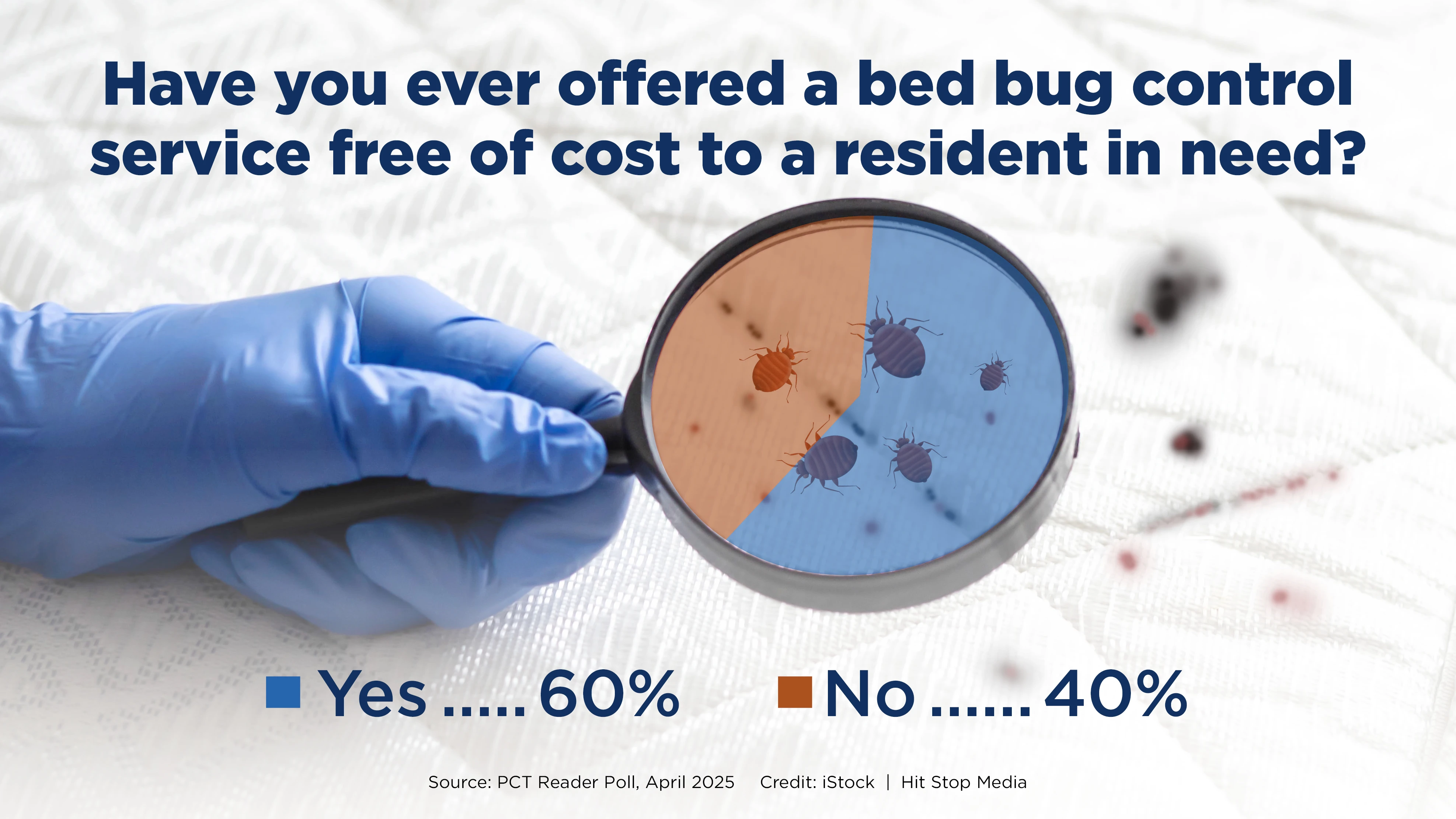Sure, bed bugs are the current talk of the industry — and with their numbers climbing, it’s with good reason. But along with bed bug resurgence there seems to have been a quieter increase in two other bloodthirsty pests: fleas and ticks.
Since the mid-1990s, when on-pet treatments available from veterinarians became the rage, PCOs have lamented the loss of flea and tick accounts. However, if there’s one thing history has proven, it’s that there is no such thing as a silver bullet.
“We are starting to hear murmurs of ‘resistance’ about on-animal flea and tick treatments,” notes Dr. Phil Koehler, entomology professor at the University of Florida in Gainesville. “But I don’t know whether there’s true resistance or whether people have just gotten too complacent in the way they deal with flea and tick control.”
Koehler says that it may be more likely that pet owners are simply not giving their cats and dogs the treatment early enough in the season, or at the time intervals specified by the label. “They’re also not thinking about an integrated approach, things like washing the pet’s bedding, for example,” he adds, noting that local veterinarians are seeing anemic puppies drained from the amount of bites they’ve received. “All it takes is one engorged female tick that can lay between 3,000 and 6,000 eggs in a very short time.”
Koehler has been working with Linda Prentice, technical director of Bug-Out Services, Jacksonville, Fla., to help handle the increased calls for fleas, ticks and bed bugs. “All of these kinds of accounts require a really thorough inspection,” Prentice says. “We actually have put together a ‘tool kit’ for these kinds of accounts where we are inspecting and vacuuming the account in zones.”
PUBLIC HEALTH. Koehler notes that certain tick species, including American dog and lone star ticks, are capable of causing paralysis of their host. Their salivary glands have the ability to immobilize certain nerves.
For example, Koehler tells of a 6-year-old girl in Florida who woke up paralyzed from the waist down. She went straight to the emergency room at the Eglin Air Force Base, but doctors were stumped. By the next day, she was paralyzed from the neck down.
Fortunately, a nurse noticed a tick on the top of the girl’s head. The medical team soon realized it was the cause of the paralysis. With the tick — and thus the salivary glands — removed, the child began recovery almost immediately.
With the benefit of hindsight, Koehler says, the doctors determined that had the tick gone undetected another 12 to 24 hours, the girl’s diaphragm would have been paralyzed and she would have suffocated. It underscores the importance of knowing what you’re dealing with, Koehler concludes. “‘Biting’ accounts could be bed bugs, could be ticks, could be delusory parasitosis, which presents its own set of problems,” he says, “but you could also be saving a life.”
Bug-Out’s Flea & Tick Treatments
One important component in the toolbox of Linda Prentice, technical director of Bug-Out Services in Jacksonville, Fla., is Kills Bedbugs pyrethrin spray from J.T. Eaton & Co. (www.jteaton.com). Prentice said she is pleased with the results she is getting with bed bug accounts — but with the results on flea and tick accounts as well, for which the product also is labeled.
“The label is great because I can spray the mattresses and box springs lightly and know it is reaching the cracks and crevices where the vacuums cannot reach,” she said. “I’m also pleased that Kills Bedbugs is ready to use and convenient to carry — our trucks can’t hold much more equipment, so I’m all about efficiency these days.”
Koehler said he agrees that the pyrethrin formulation of Kills Bedbugs is an integral part of through treatment for all three pests. He adds that PCOs need to keep educating their customers to view prevention as a long-term process.
“To keep new deer tick infestations from starting, for example, offer to move their bird feeders away from the house,” he said. “Prevent wild animals from nesting around and under the house, because ticks and fleas can do just as well on raccoons, possum and deer as they can on cats and dogs.”
Get curated news on YOUR industry.
Enter your email to receive our newsletters.
Explore the June 2007 Issue
Check out more from this issue and find your next story to read.
Latest from Pest Control Technology
- Target Specialty Products, MGK Partner for Mosquito Webinar
- Cockroach Control and Asthma
- FORSHAW Announces Julie Fogg as Core Account Manager in Georgia, Tennessee
- Envu Introduces Two New Innovations to its Pest Management Portfolio
- Gov. Brian Kemp Proclaimed April as Pest Control Month
- Los Angeles Ranks No. 1 on Terminix's Annual List of Top Mosquito Cities
- Kwik Kill Pest Control's Neerland on PWIPM Involvement, Second-Generation PCO
- NPMA Announces Unlimited Job Postings for Members






